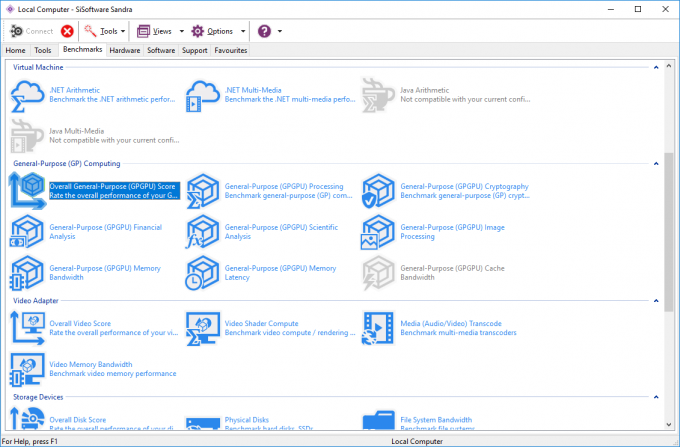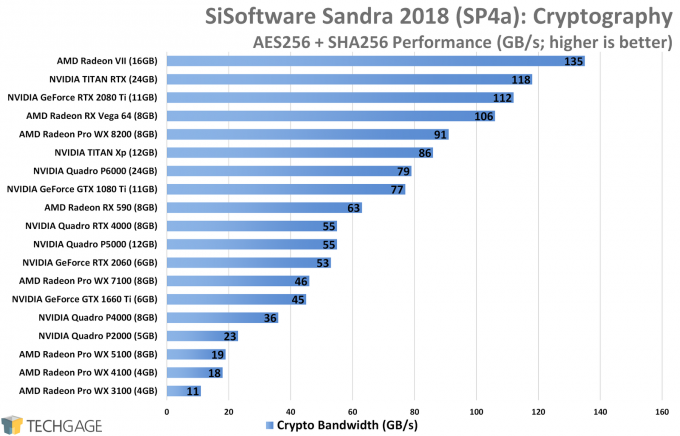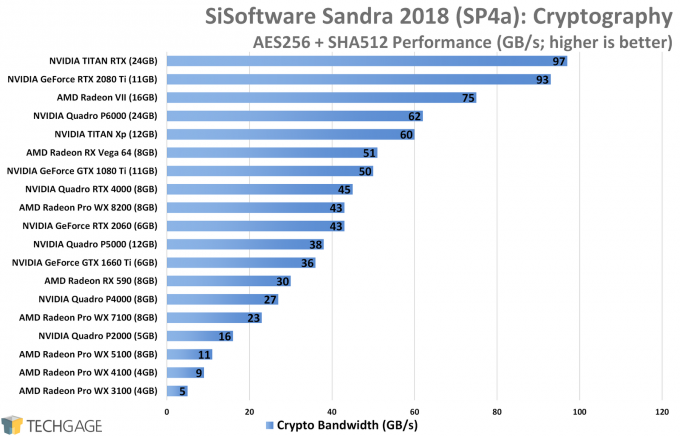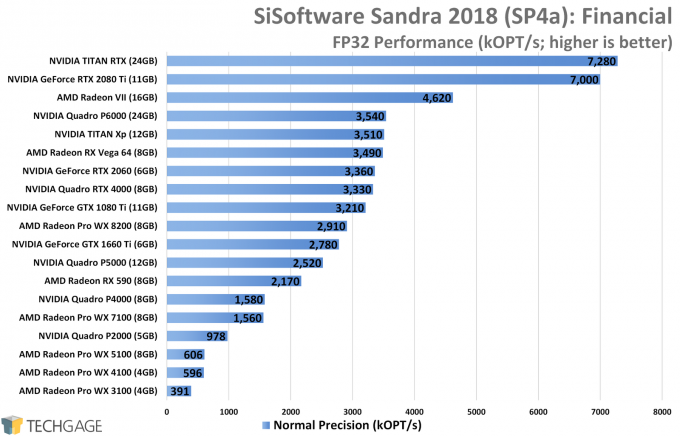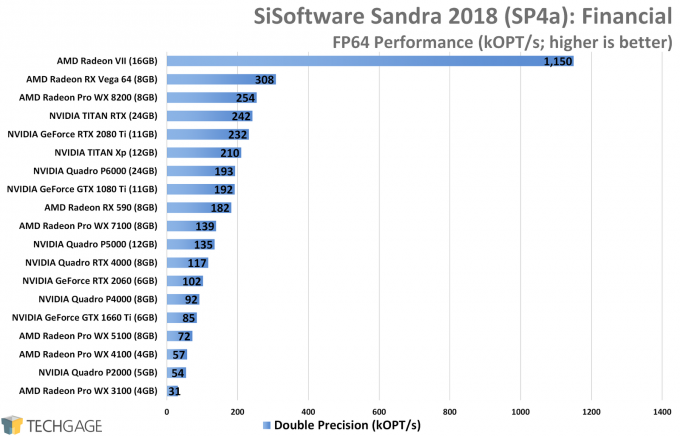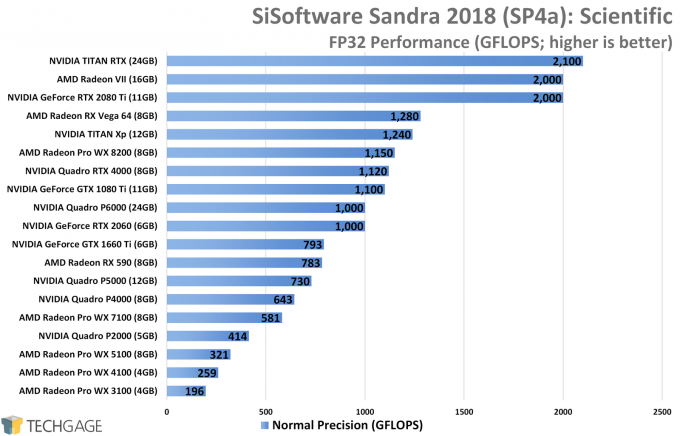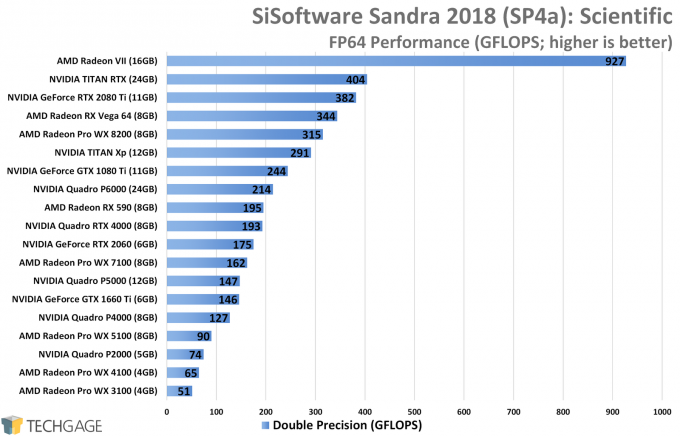- Qualcomm Launches Snapdragon 4 Gen 2 Mobile Platform
- AMD Launches Ryzen PRO 7000 Series Mobile & Desktop Platform
- Intel Launches Sleek Single-Slot Arc Pro A60 Workstation Graphics Card
- NVIDIA Announces Latest Ada Lovelace Additions: GeForce RTX 4060 Ti & RTX 4060
- Maxon Redshift With AMD Radeon GPU Rendering Support Now Available
NVIDIA TITAN RTX Workstation Performance Review

NVIDIA’s TITAN RTX means business – and a lot of it. This jack-of-all-trades graphics card caters to those with serious visual computing needs, whether it be designing and rendering 3D scenes, or poring over repositories of photos or other data with deep-learning work.
Page 6 – Math: Cryptography, Financial & Scientific
Cryptography, Financial & Scientific Performance
AMD has a way of throwing truly impressive cryptography performance into the mix when you least expect it. With the normal 256+256-bit test, the VII manages to outpace the TITAN RTX, while NVIDIA’s top dog and the RTX 2080 Ti reverse the trend with the heavier 256+512 test.
For its part, AMD’s Vega architecture is really strong for encryption, and so is NVIDIA’s Turing architecture. It’s really impressive what a difference a single generation can make sometimes. We’ve seen the same kind of leaps from the CPU vendors in crypto as well in recent years.
Because FP64 really isn’t a focus of Quadros and Radeon Pros, we’re not likely going to continue testing Sandra that way in the future, unless of course that reality happens to change somehow. The reason we have FP64 performance right now is obvious once you look at the graphs: the Radeon VII simply dominates the results, thanks to its partially unlocked double-precision.
It’s felt like both AMD and NVIDIA knew that the FP64 buzz on gaming cards wouldn’t last beyond a day, so the green side hasn’t released a double-precision retort, and AMD has been recently rumored to have canned the VII, which means soon, no FP64 option will be alluring to regular folk. But again.. with FP64’s focus on things other than ProViz, its performance holds overall little importance to most reading this article.
In the single-precision test, the TITAN RTX kept comfortably ahead of the rest, save for the RTX 2080 Ti, which places not far behind. The Radeon VII offers a great FP32 result against the cards behind itself, but still manages to sit well behind the 2080 Ti. For FP64, forget about it… the VII is king.
With the scientific result, we’re seeing much of the same as with the financial one, except that the Radeon VII has managed to perform extremely well in the FP32 result here as well, essentially matching the top NVIDIA cards, and of course outperforming them in the scientific test. How many scientists use gaming cards in their labs, we’re not sure, but AMD has the right to boast about some really impressive performance here.
Support our efforts! With ad revenue at an all-time low for written websites, we're relying more than ever on reader support to help us continue putting so much effort into this type of content. You can support us by becoming a Patron, or by using our Amazon shopping affiliate links listed through our articles. Thanks for your support!




